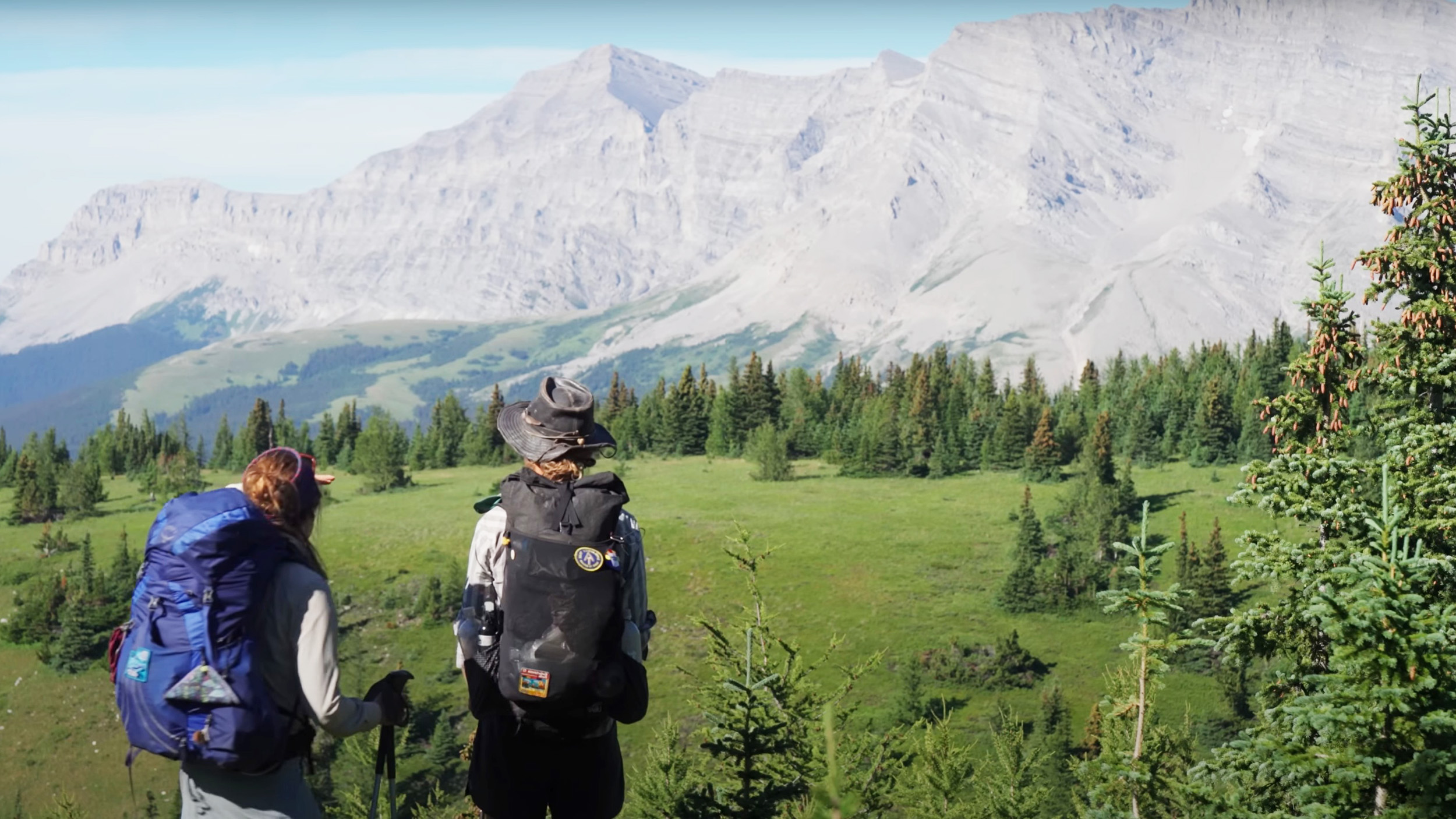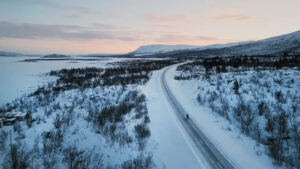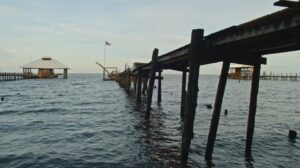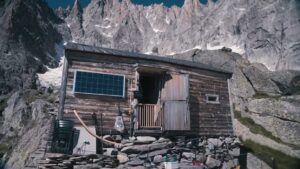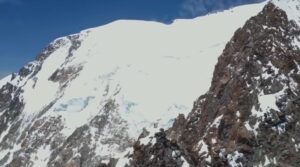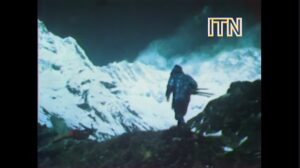If you want to get to know a wild place — really know it — you have to travel it by foot. There’s just something about moving slowly that allows the brain to absorb and process the subtleties of beautiful settings.
Unfortunately, the measured pace of long-distance backpacking trips doesn’t often make for interesting feature-length films. I’m a long-distance backpacker and outdoor journalist, so trust me when I say that. I’ve seen a lot of them. Backpacking tales seem better suited to books, where authors can better break up straightforward point-A-to-point-B narratives with inner dialogue, humorous asides, and other nuances.
But Out There: The Great Divide Trail is a bit of an exception.
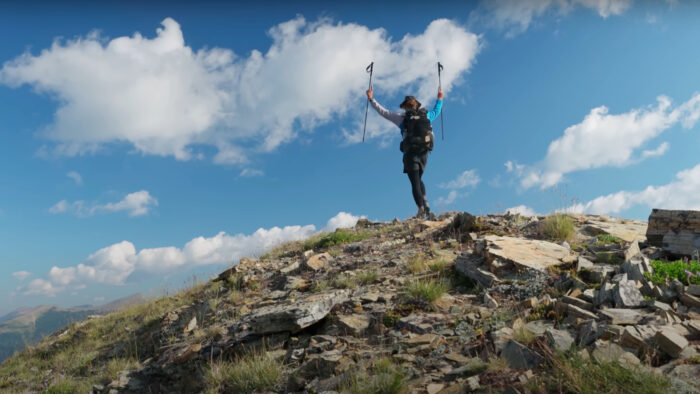
Photo: Screenshot
The 80-minute film was shot, directed, and edited by its two main characters: Ryan “Kodak” Brown and Ilsa “Cinnamon” Praet. It follows the two as they journey along Canada’s Great Divide Trail (GDT), which stretches from Waterton Lakes National Park on the U.S.-Canadian border to Kakwa Provincial Park, some 1,130km north.
Familiar grooves
To some extent, Out There settles into the same familiar grooves of many long-distance backpacking movies. Kodak and Cinnamon gather their gear, travel to the trail’s start, take the requisite photo, and start hiking. Along the way, they meet interesting people, power their way over passes, scrape the morning frost from their water bottles, and otherwise attend to life on a long-distance trail. Eventually, they reach the end and go home.
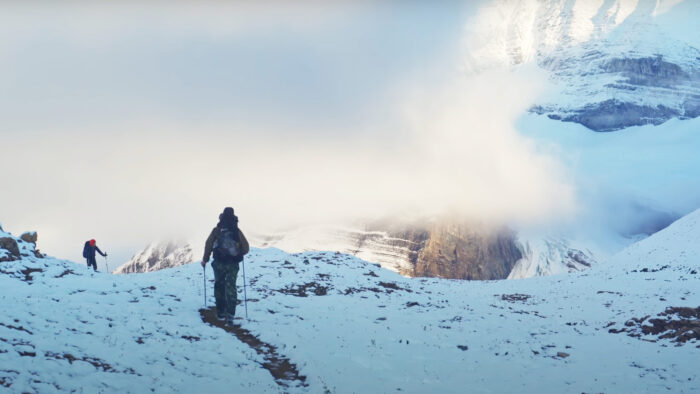
Photo: Screenshot
But where the film stands apart is in the wise decision to center the GDT itself. The pair have an eye for sweeping landscapes and the technical skill to showcase those landscapes to full effect. When paired with an unobtrusive acoustic soundtrack, the result is a film that makes the best use of the GDT’s famously remote setting to quiet, meditative effect.

Photo: Screenshot
How it differs from other trails
It helps that the GDT is so beautiful. Dan Durston, a Canadian backpacker who runs a successful (and innovative) ultralight backpacking gear company, is interviewed throughout the film. He says it best:
“You can hike trails that are awesome. Pacific Crest Trail. Te Araroa. Those are fantastic trails. But what they don’t have is this big, authentic, intact wilderness that we have here in the Canadian Rockies. We are going hundreds of kilometers without crossing a road. Fully intact ecosystems. And it gives the trail this sense of authenticity that you’re actually hiking through something really special. The cliffs, the icefields, the spires. It’s some of the most aesthetic mountains in the world.”
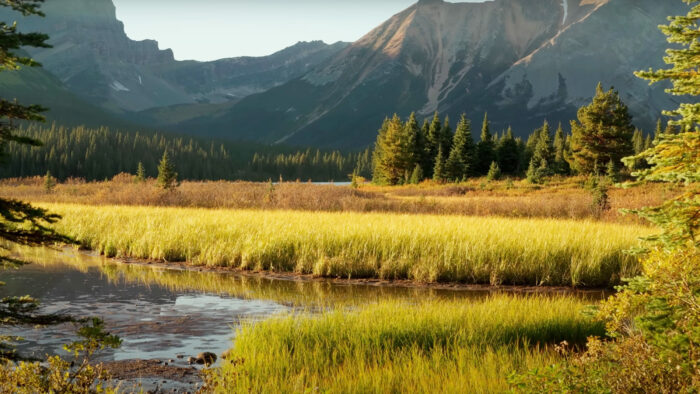
Photo: Screenshot
Durston knows what he’s talking about. He was the first person on record to yoyo the GDT, which is to say finish it in one direction, then immediately turn around start walking back the other way.
Kodak and Cinnamon are also experienced hikers. They met on a thru-hike of the Pacific Crest Trail, and “haven’t really left each other’s side since,” Kodak says in the film’s voiceover. But the GDT has challenges that test even the most capable backpacker. The trail’s remote nature is certainly a factor. Wildlife is another.
Bears, wildfires, insects
“People have to consider that the Canadian Rockies has most of its megafauna still on the ground. In the wild. Including black bears and grizzly bears. There’s everything from ticks in the early season to biting, flying insects. There are wildfires. There’s also some risk with the traffic where the trail is forced to follow along highways from time to time.”
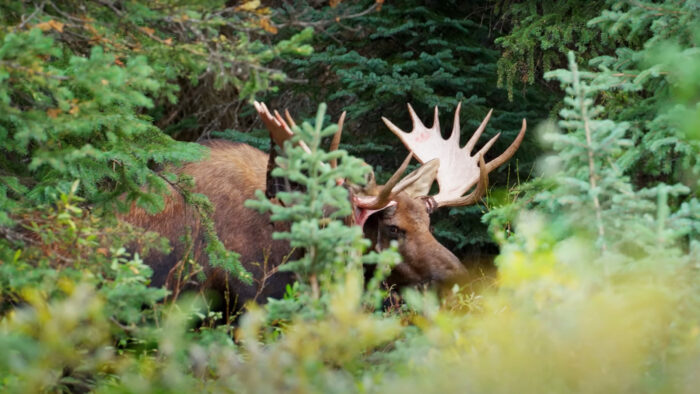
Photo: Screenshot
It’s also tough logistically. Unlike most of the long trails in the United States, there isn’t one permit that will get you through all the protected areas that the GDT traverses. It necessitates careful planning and sticking to that plan.
Finally, there are sections of trail that aren’t trail — high alpine areas that require route finding, scrambling, and navigating sketchy scree fields.
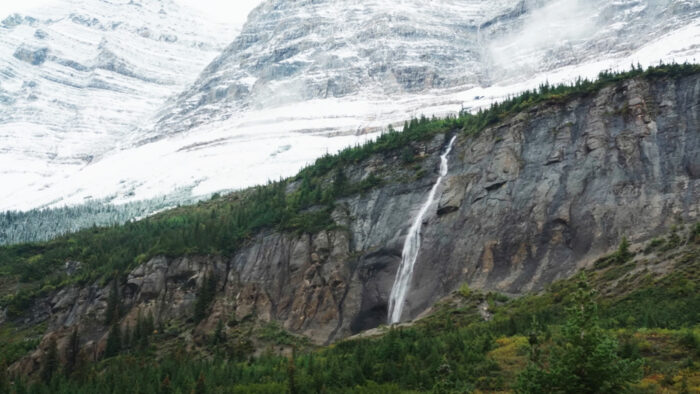
Photo: Screenshot
“Damn GDT. You don’t need to go so hard right out of the gate,” Cinnamon says during a steep climb early in the journey. Kodak later wryly refers to the GDT as “the Great Difficult Trail.”

Photo: Screenshot
Just do it
But her partner also offers some words of comfort to viewers with itchy feet.
“So for those intrepid souls who want to hike the whole thing, I’d say start planning early, get as much information as you can, and don’t get discouraged. You can do it. If you have the resolve, you can make it work,” Kodak narrates over some characteristically beautiful cinematography.
The pair finishes their trek in a cozy cabin on the shores of a lake. It’s a fitting end to a journey more spiritual than pulse-pounding.
“Saying goodbye is bittersweet. The further north we went, the more we fell in love with the natural beauty surrounding us,” they write in the cabin’s logbook.
